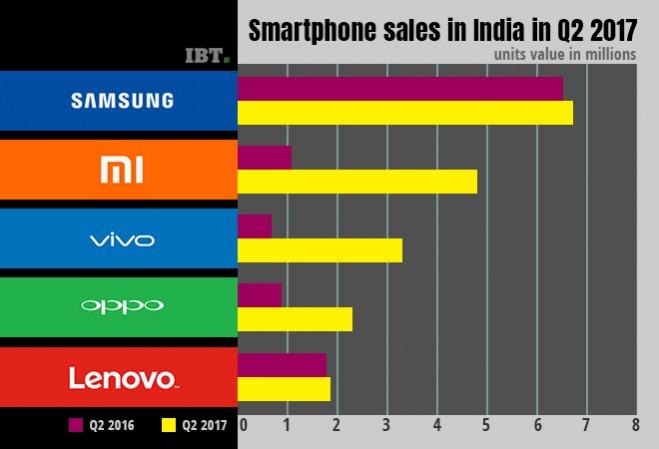The Indian smartphone industry has witnessed a negative growth for the first time in history as there has been a considerable decline in the sales of smartphones across leading brands in the country in Q2 2017. The inception of Goods and Services Tax (GST) on July 1 has been touted as the root cause for the declining sales of smartphones across the country.

GST seems to have slowed down the smartphone shipments across vendors due to general confusion over the implementation of GST and a lack of awareness about its implications.
"Apprehension among distributors and retailers regarding the impact on prices has caused the market to adopt a wait-and-see policy," explained Canalys Analyst Rushabh Doshi.
The Canalys report also claims that the smartphone shipment in India has witnessed a year-on-year decline of 4 percent in Q2 2017, owing to the GST effect. The report also confirms that Samsung is still leading the pack with a 25 percent market share and a total of 27 million units shipped in India in the current quarter.
Xiaomi is placed second in the market with 4.8 million units being shipped this quarter, which is almost four times in comparison to Q2 2016. Xiaomi is followed by the enterprising Vivo which has managed to ship a record number of 3.4 million units.
Oppo is on fourth position thanks to its record sales of over 2 million units in Q2 2017 as opposed to the previous year. On the contrary, Lenovo hasn't seen much growth in the last one year as it sits in the fifth position with a total of 1.9 million smartphone shipments in Q2 2017.
Here's what Canalys Research Analyst Ishan Dutt had to say about the smartphone sales projection for the year.
With China suffering its own decline this quarter, India is a market of huge strategic importance to Chinese smartphone vendors, Samsung is under immense pressure in the mid-tier from the Chinese players. For now, its low-end J Series is helping it sustain its lead and maintain share. But it needs to use its brand to make its mid-tier devices more desirable. The recently launched S8 and S8+ have helped it win back some of its premium shares. It now needs to generate a halo effect around these products in the mid-tier to counteract the threat from China."
It must be noted that Xiaomi, Oppo, Vivo, Lenovo and Gionee together control over 50 percent in India's smartphone market. Despite the marginal decline in smartphone sales for the current quarter, Canalys Analyst Rushabh Doshi sounds positive about the emerging trend in smartphone market post-GST.
Here's what Doshi had to say: "The market will emerge stronger post-GST. Vendors can look forward to leaner distribution, faster delivery and increased demand from local retailers and distributors."









!['Had denied Housefull franchise as they wanted me to wear a bikini': Tia Bajpai on turning down bold scripts [Exclusive]](https://data1.ibtimes.co.in/en/full/806605/had-denied-housefull-franchise-they-wanted-me-wear-bikini-tia-bajpai-turning-down-bold.png?w=220&h=138)



